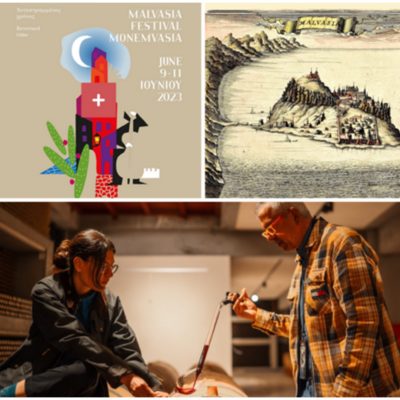Malvasia. A wine unique for its past and special for its roots. In the vineyards of the Parnonas (Malevos) slopes, a variety of local grapes were cultivated, from which a sweet sun-dried wine was produced before the 13th century in Byzantine Monenvasia, on the south of the Peloponnese peninsula. After the occupation of Monemvasia by the Turks and the destruction of its vineyards, Malvasia’s journey continued from Venetian-occupied Crete until the middle of the 17th century. As long as the rule lasted, it traveled to all the markets of the East and West. It was exported to all the ports of the Mediterranean and the Black Sea, reaching the most demanding markets in Europe. Malvasia’s reputation is reflected in many references by important figures of letters and art. In the play “Richard the Third” (1595) by William Shakespeare the Duke of Clarence is murdered and drowned “in a Malvasia cask” (Malmsey butt). Leonardo da Vinci had his own small Malvasia vineyard in Milan, the Nobel Prize-winning author Thomas Mann in the play “Buddenbrooks” brings two bottles of Malvasia from the cellar, Martin Luther, Alexandre Dumas, Guy de Maupasant often refer to Malvasia, Giuseppe Garibaldi grew Malvasia in Carpera, Sardinia, while the composer Giuseppe Verdi was a good friend of Malvasia wine.
On Sunday, June 4, the show Infinitely Curious featured artistic director of the first international Malvasia Festival, Sotiris Bolis, and oenologist of Malvasia wine, Marialena Tsibidi, who shared with us everything we needed to know about a wine that has traveled very far and for very long until it finally came back home in Monemvasia.
